The Definitive NAMM 2015 Saxophone Roundup – Part 3
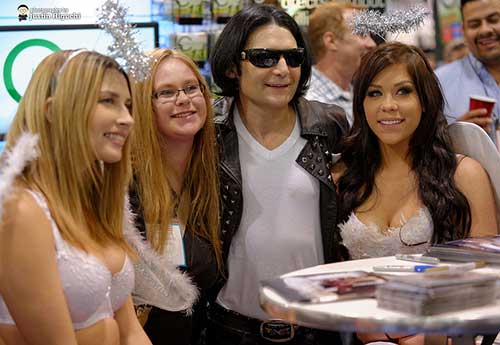
Note for Mobile Users: Normally it’s not a big deal, but for this particular series of articles, I thought I’d mention – you’ll be seeing some ad banner images mixed in with the product images in this article, so keep in mind that any image with the word “Sponsored” directly above it is an ad and not part of the article (will try to think of a more elegant solution for the future).
This article is part 3 in a 3-part series covering the latest and greatest saxophone products shown at NAMM 2015. In case you missed them, click here for part 1 and click here for part 2.
ReedGeek set
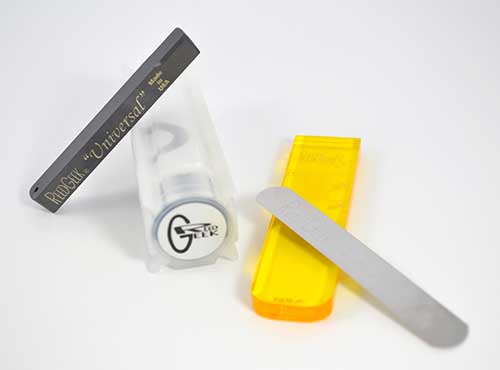 I purchased the ReedGeek last year after its creator, Mauro, showed me some basic tips how to improve a reed that was not responding to my satisfaction. This year, Mauro showed me the new ReedGeek which is called the ReedGeek “Universal” G3 which has a titatinum-cermicoat so you do not have to polish or sharpen this ReedGeek over time. In addition, Mauro showed me the plaque and gauge set. Thisplaque and gauge are designed so you can find the mouthpiece facing curve and where you need to start working on the reed to have it perform better. I believe this is one of the best reed tools on the market, and I say that from my own experience, as well as seeing how so many players have purchased the ReedGeek and started using it with success.
I purchased the ReedGeek last year after its creator, Mauro, showed me some basic tips how to improve a reed that was not responding to my satisfaction. This year, Mauro showed me the new ReedGeek which is called the ReedGeek “Universal” G3 which has a titatinum-cermicoat so you do not have to polish or sharpen this ReedGeek over time. In addition, Mauro showed me the plaque and gauge set. Thisplaque and gauge are designed so you can find the mouthpiece facing curve and where you need to start working on the reed to have it perform better. I believe this is one of the best reed tools on the market, and I say that from my own experience, as well as seeing how so many players have purchased the ReedGeek and started using it with success.
More info:
http://www.reedgeek.com
Plaque and Gauge Set Instructions
http://www.reedgeek.com/wp-content/uploads/2014/03/PlaqueInstructions.pdf
Forestone daCarbo neck and saxophone
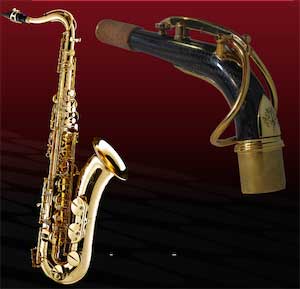 I have played the Forestone mouthpieces, reeds, and saxophones and have been very impressed by their consistency as well as the attention to detail. Forestone has teamed up with daCarbo, who is known for making high end brass instruments out of a carbon fiber compound, to introduce a daCarbo/Forestone saxophone neck.
I have played the Forestone mouthpieces, reeds, and saxophones and have been very impressed by their consistency as well as the attention to detail. Forestone has teamed up with daCarbo, who is known for making high end brass instruments out of a carbon fiber compound, to introduce a daCarbo/Forestone saxophone neck.
I was able to try the standard Forestone neck as well as the new daCarbo neck. The new neck is made out of carbon fiber compounds, which I was told optimizes the neck’s vibration. The neck is said to enhance your articulation and response as well as make it easier to play your low notes and keep your high notes at a stable pitch.
The Forestone tenor with the standard brass neck played great at the booth, but I do have to say I was very surprised by how the daCarbo neck compared. The daCarbo neck had the same overall sound as the traditional brass neck, but I found it to be a bit warmer, and while playing chromatically through the Forestone tenor saxophone’s range, I found the daCarbo neck helped me produce a very even scale and project without having to force lots of air through the saxophone. Overall, the daCarbo neck with the Forestone saxophone is a great combination, and I hope to try this neck out on other saxophones to see if I find a similar result.
More info:
http://www.dacarbo.ch/index.php/en/
Sax Dakota SDT-XR-92 tenor saxophone
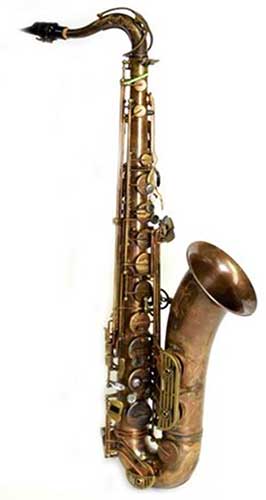
I had a chance this year to head over to the Sax Dakota booth and try out one of their newer saxophone models called the Sax Dakota SDT-XR-92. Compared to the other Sax Dakota models that come in various finishes, the SDT-XR-92 looked like Sax Dakota’s “vintage” offering. What’s distinct about the SDT-XR-92 is that this horn is made out of an un-lacquered bronze brass alloy.
In terms of how the SDT-XR-92 tenor saxophone played, it was overall very good. I found this tenor was free-blowing from low Bb to high F# with very little resistance. The action felt comfortable and it just took me a couple minutes to get used to the layout of the palm keys. I preferred the sound of this model over the other Sax Dakota models because I found it to be more focused. The intonation was solid on this tenor, and did not take much adjustment whatsoever while playing through my overtone exercises, long tones, etc.
I am glad that Pete LaPlaca, the founder of Sax Dakota has introduced a model that I believe many vintage players as well as those players looking for a modern “vintage” saxophone will most likely enjoy.
More info:
http://www.saxdakota.com/index.html
Buffet Senzo Alto Saxophone
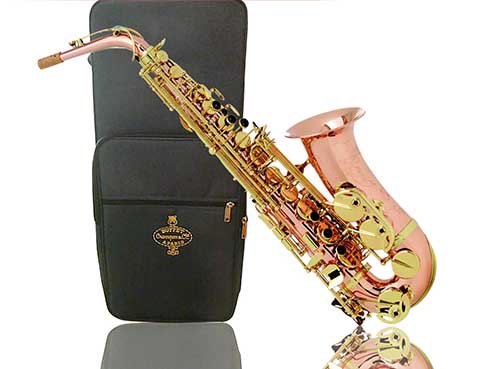
I was excited this year that I had the chance to test play the Buffet Senzo alto saxophone. The Buffet Senzo alto was inspired by such previous models as the Super Dynaction and S1. When I first saw the Buffet Senzo, it reminded me of the Yanagisawa 992PG model in terms of its appearance. The Buffet Senzo is made up of a red copper body with yellow brass key-work. In addition, it was installed with blue-steel springs, leather pads and metal resonators.
In terms of the sound, the Buffet Senzo had by far one the warmest sounds I have experienced thus far on a modern alto saxophone. The action felt great but I would have to say, if you have not played a Buffet or Keilwerth before, you might have to take a couple minutes to get used to the layout of the saxophone. I believe the Buffet Senzo is well suited for classical music as well as jazz. I am hoping a tenor model is in the works but for now, I recommend trying the Buffet Senzo alto if you are in the market for a new modern alto saxophone.
More info:
http://www.buffet-crampon.com/en/instruments/saxophones/senzo/
Selmer Limited Edition Alto Saxophone
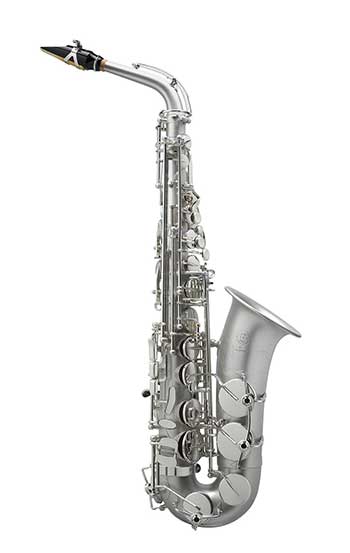
Henri Selmer Paris recently came out with a limited edition alto saxophone to celebrate the 200th anniversary of the birth of Adolphe sax. This limited edition alto takes various aspects from previous model saxophones and combines them on a modern horn.
Some of the interesting design features that pay tribute to some of the vintage model Selmer’s are as follows: the neck key, the spatula key with the pearl thumb rest, the brace between the body and the bell, the wire key guards, the pearl key rollers, and the nickel silver key buttons. The extensive and unique engraving illustrates various elements depicting the world of Adolphe Sax.
When I played this saxophone, the overall sound was on the brighter side and it reminded me of a series II or III saxophone in terms of response. I found the action of the saxophone reminded me of my Super Balanced Action alto with respect to the octave key, and the rest of the horn felt like a series II or III. Overall, I think anyone who is a saxophone collector will definitely want to add this alto to their collection.
More info:
http://www.selmer.fr/instruinfo.php?page=NEW&famille=SELMER%20SAX
Vandoren Reed Trimmer
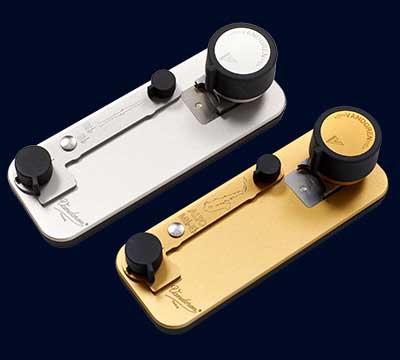 I stopped by the DANSR booth and Sylvan Carton was nice enough to show me how the Vandoren Reed Trimmer worked. The Reed Trimmer looked like a simple way to repair damaged tips and increase the strength of reeds that may have already gotten a lot of use.
I stopped by the DANSR booth and Sylvan Carton was nice enough to show me how the Vandoren Reed Trimmer worked. The Reed Trimmer looked like a simple way to repair damaged tips and increase the strength of reeds that may have already gotten a lot of use.
Currently there are 5 different models for clarinet and 2 models for the alto saxophone. Each model cuts a specific model of Vandoren reed (ie: V12, Green Java, V16, ZZ, etc). I thought this was a great tool if you are really into reed trimming, and the only drawback I saw was if you play different Vandoren reeds, you would have to purchase additional reed trimmers per each cut.
More info:
http://www.vandoren-en.com/Reed-Trimmer_a720.html
Marmaduke “Feather” Strap
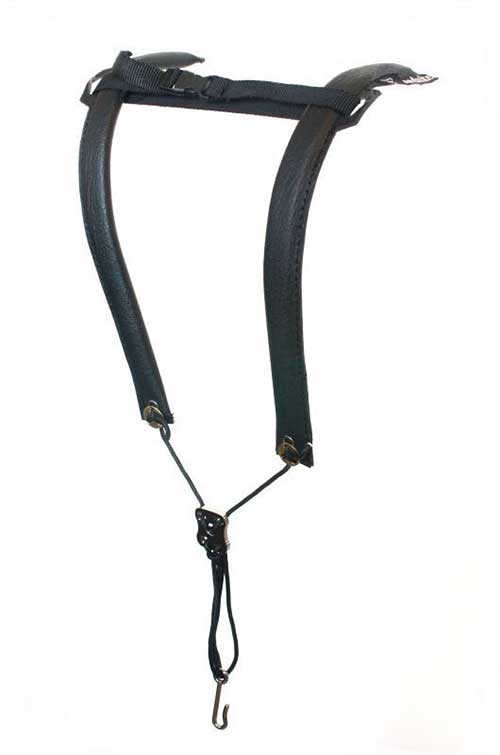 I revisited Marmaduke this year after have played his alto and tenor hard rubber mouthpieces, – which are nicely finished, hand-made, and designed to embody many of the characteristics of the vintage Meyer and Otto Link mouthpieces.
I revisited Marmaduke this year after have played his alto and tenor hard rubber mouthpieces, – which are nicely finished, hand-made, and designed to embody many of the characteristics of the vintage Meyer and Otto Link mouthpieces.
While at the booth, Alex showed me one of his neck-straps, which I’ve seen more players using as an alternative to a traditional neck strap. The Marmaduke “Feather” Strap was designed to distribute the weight of the saxophone mainly to the shoulders. I found this strap was fairly easy to adjust and felt stable when placing an alto or tenor saxophone on it. In addition, this strap did not restrict the horn to one spot, like some harness straps do. Overall, The Marmaduke “Feather” Strap is a great new product Alex has added to his existing line of products.
More info:
http://kyotobeauty.ocnk.biz/product/14
Conclusion
The 2015 NAMM Show was another great year filled with new artists, new products, and most importantly new exhibitors showcasing their saxophones, ligatures, reeds, necks, mouthpieces, neck straps, and the list goes on.
What I have seen over the past 4 years, besides the introduction of new products, is the improvement of current saxophone models. This is important because there are many saxophones out there that were overall good horns, but with additional research and development by the manufacturers, are now becoming great horns.
Unfortunately, I was not able to visit every booth I wanted to and spend the amount of time I would have liked to test play various saxophone products. If I did not include you in this list, this is not a reflection on your product, it just came down to time. If you would like me to review your product specifically or have any questions, please feel free to contact me using the information from my author bio below.
Again, another great NAMM Show and I can’t wait to see what NAMM 2016 has in store for us saxophonists next year!





